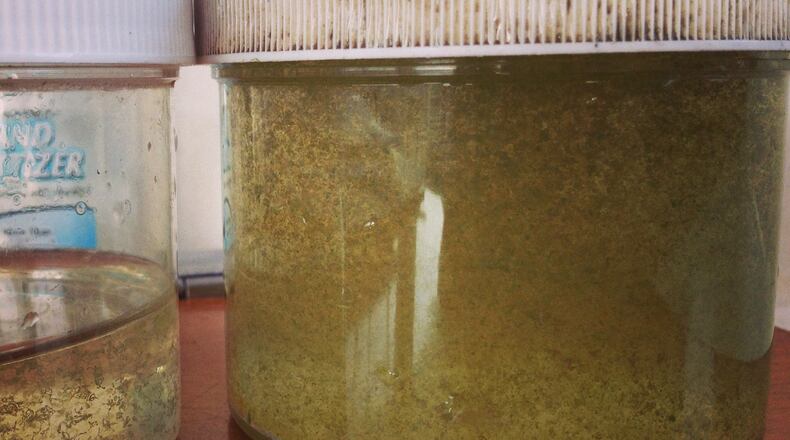NOAA noted that Lake Erie saw severe algae blooms in 2011, 2015 and 2017. Lake Erie’s blue-green algae blooms consist of cyanobacteria that can produce liver toxin microcystin, that can harm human and wildlife health.
Related: Taking a trip to Lake Erie this summer? Check for slime before you go
In 2014, some 500,000 Toledo area residents were told not to drink or even touch their tap water for four days because of high levels of toxins attributed to a bloom near the municipal water intakes.
Satellite images this summer already show harmful algae blooms in western Lake Erie, the Michigan coast, Sandusky Bay, according to the Ohio Environmental Council. Additionally, the blooms have been reported in Buckeye Lake in Licking and Fairfield counties, Lake White in Pike County and Grand Lake St. Marys in Mercer County.
Related: Water advisories posted as some state beaches
Algae blooms commonly form in warmer, more shallow waters. Record rainfalls are driving phosphorus runoff into lakes. “It’s no secret that climate change creates more extreme weather events, and rainy years like this year could very well be the new normal in Ohio,” said Pete Bucher of the Ohio Environmental Council.
Rick Stumpf of the National Oceanic and Atmospheric Administration says heavy spring rains have helped push algae from the bay into the lake.
Stumpf says that while spring rain has prevented farmers from planting and fertilizing, researchers can study the residual threat of “legacy” phosphorous runoff on the lake’s health.
Some 11 million people in the U.S. and Canada drink treated water from Lake Erie every day. The blue-green algae blooms have been appearing in Lake Erie every year since 1998.
In the pending state budget bill are plans to create the H2Ohio Fund, which would pay for water protection measures in Lake Erie and other rivers and lakes. How much money should go into the fund over what period of time is a point of contention between the House and Senate.
Related: DeWine calls for $900M for water protection projects
Information from the Associated Press is included in this report.
About the Author

